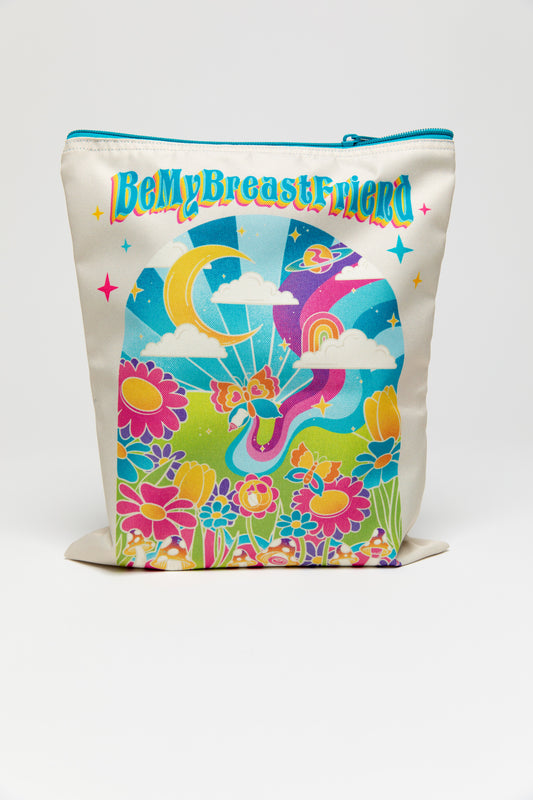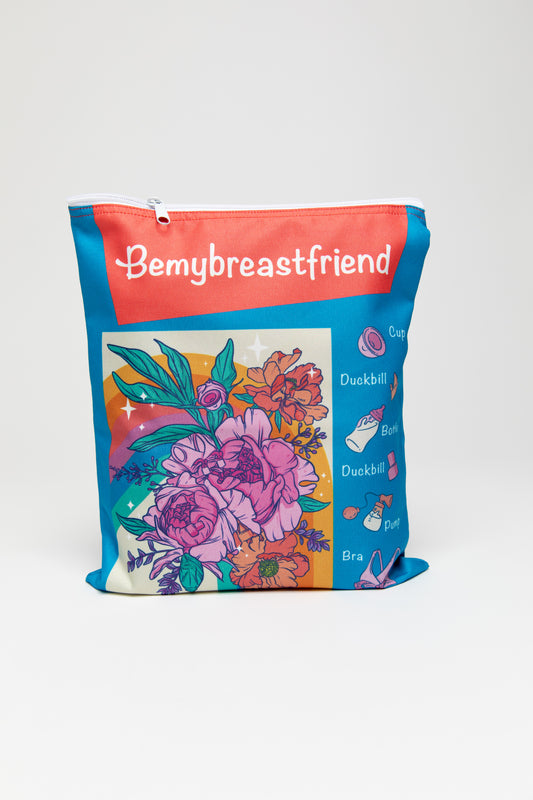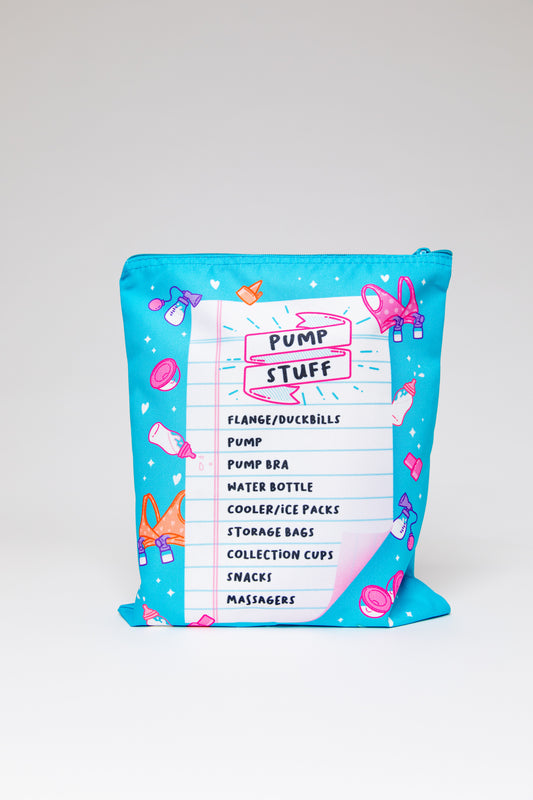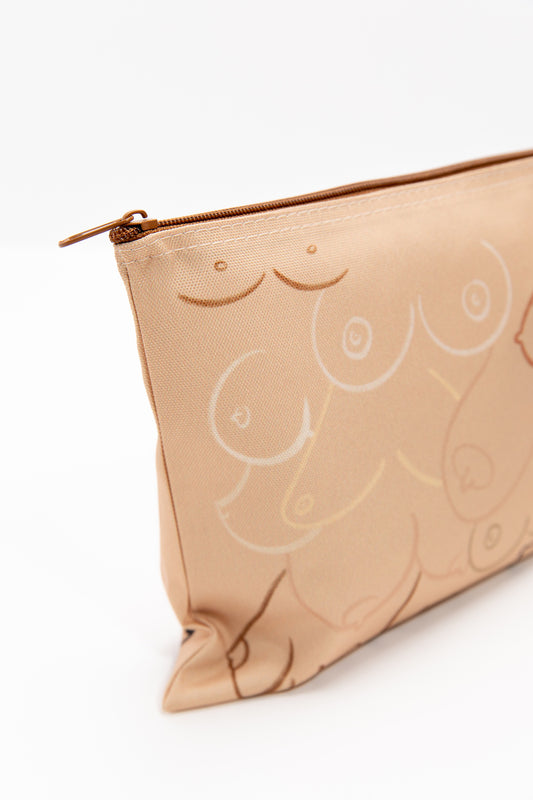
Let me guess — you were just starting to feel like you might be getting the hang of breastfeeding when suddenly things got weird. Your nipples are stinging. Your baby’s mouth has white patches. Maybe feedings suddenly feel like they’re happening with a blowtorch.
Welcome to the magical world of thrush — a yeast infection that loves to sneak in and overstay its welcome.
It’s frustrating, confusing, and can feel like a major step backward after you’ve worked so hard to get nursing established. But the good news? Once you know what you’re dealing with, you can get rid of it — and take steps to keep it from coming back.
Let’s get into it.
What Is Thrush?
Thrush is a fungal infection caused by an overgrowth of Candida albicans — a type of yeast that normally lives in our bodies without causing problems. But when the balance is off (could be caused by antibiotics, cracked nipples, or stressed immune systems), that yeast can multiply fast.
In the context of breastfeeding, thrush usually shows up:
-
On your nipples (and sometimes deep in the breast tissue)
-
In your baby’s mouth (especially the tongue, cheeks, or lips)
-
On your baby’s bottom as a diaper rash (yep, it can spread)
It’s highly contagious between mama and baby — so once one of you has it, you’re often treating both of you at the same time.
How Do You Know It’s Thrush?
Not every nipple pain is caused by thrush. There are a variety of things that can make breastfeeding or pumping uncomfortable. Sometimes it's a bad latch. Or poor pumping technique. Or your baby just got extra chewy. (If you are experiencing nipple pain specifically while pumping, check out this post.) But here are some signs of thrush to pay attention to:
Signs of Thrush in You:
-
Nipples that burn, sting, or feel sharp during or after feedings
-
Pink, shiny, or flaky nipples (they may look “glazed”)
-
Itchy breasts
-
Deep breast pain that feels achy or stabbing (especially after feeds)
-
Sudden sensitivity after previously pain-free nursing
Signs of Thrush in Baby:
-
White patches inside the mouth that don’t wipe off easily
- Fussiness at the breast
-
Gassiness or gurgly tummy
-
Diaper rash that’s bright red with defined borders, possibly with little satellite bumps
If you suspect thrush, don’t wait. Start treatment early — because it can get stubborn fast.
It's more likely that your suspected thrush is being caused by a poorly fitted flange or poor latch by baby.
If baby's latch is optimal and functioning as it should, the tongue should by compressing the hard pallet of their mouth. This action will help remove the white milk residue left behind, when the latch and function is not optimal, this white film may still linger. When we see milky white tongue it is easy to jump to thrush. With the combination of milky tongue and sore nipples, thrush seems like the only answer. Consulting with a lactation professional can help rule thrush out and provide the help you need! What if it really is thrush? Lets get back to buisness!
How Do You Get Thrush?
There are a few ways it can sneak up on you:
-
Antibiotics (for you or baby): These wipe out both bad and good bacteria, making room for yeast to overgrow. It’s especially important for GBS positive mamas to be on the lookout for thrush. Antibiotics administered during labor (though important) can definitely increase your risk of developing this annoying yeast overgrowth.
-
Cracked nipples: Any open skin makes an easy entry point for yeast to get in and spread. (If you are dealing with cracked or broken nipples, I recommend using a good nipple cream and these silverette nursing cups to help with the healing process.)
-
Baby was born with it: Yeast can be passed during vaginal delivery.
-
Damp breast pads or poor air flow: Yeast loves warm, moist environments. (Consider swapping traditional breast pads for collection cups like these. These cups help to keep breast milk from directly sitting on your nipples.
-
Compromised immune system: Sleep-deprived and postpartum? Yeast sees its opportunity. Looking for ways to support your immune system and overall health postpartum? In this blog post, I share a few supplements that you might find beneficial.
Can I Keep Breastfeeding with Thrush?
Yes. Yes. YES.
Unless your doctor advises otherwise (rare), it’s safe to keep breastfeeding — and in fact, it’s best for your supply to do so.
Just know that it might hurt. But treating both you and baby (at the same time!) can relieve symptoms quickly.
IMPORTANT: Boil pacifiers, bottle nipples, nipple shields, and pump parts daily during treatment to prevent re-infection. (The hot boiling water helps to kill any yeast that may be living on these surfaces.)
How Do You Treat Thrush?
1. Medication
Ask your provider or lactation consultant about:
-
Nystatin oral suspension for baby.
-
Antifungal nipple cream (like miconazole or clotrimazole)
-
Diflucan (fluconazole) for you if symptoms go deeper into the breast
Make sure you treat both you and baby even if only one of you shows symptoms. Otherwise, you can keep passing it back and forth. There has been chatter among the lactation space that it is not possible to transfer thrush from Mom to baby and visa versa, I would consult your physician on treatment. Ultimately, this is medical advice that can only be provided by your doctor, that said I would recommend inquiring if they have any insight on this newer discovery.
2. Probiotics
Yeast thrives when good bacteria are low. A high-quality probiotic (for both you and baby) can help restore gut balance. Look for ones with lactobacillus strains.
3. Topical Relief
Some mamas find natural relief with:
-
Coconut oil (mildly antifungal — apply to nipples between feeds)
-
Apple cider vinegar rinse (1 Tbsp vinegar in 1 cup water — wipe nipples and baby’s mouth gently after each feed)
-
Diaper-free time (Because thrush thrives in moist environments, it can be especially difficult to kick a yeasty diaper rash. Consider giving your baby time each day without the diaper on. This gives their little bum a chance to dry out. Just lay down a towel to soak up any potential messes.)
4. Hygiene + Sanitizing
-
Wash your hands constantly
-
Sterilize everything that touches your breasts or baby’s mouth
-
Change breast pads frequently
-
Let nipples air dry when possible
Yes, it’s a lot. But it’s temporary. You’re not doomed to breastfeed in a yeast spiral forever.
How Can You Prevent It?
Once you’ve had thrush, you’ll probably do anything to avoid having it again. I get it.
Here’s what helps:
-
Avoid unnecessary antibiotics (ask your provider if probiotics can be taken alongside them)
- Air out your nipples after feeds
-
Change breast pads frequently
-
Rinse nipples with vinegar/water or saline if you’re prone to yeast
-
Take probiotics during the postpartum period
-
Keep baby’s mouth and diaper area clean and dry
When to See a Doctor
If symptoms aren’t improving within a few days of home treatment, or if pain is severe, don’t wait. See your provider or an IBCLC (International Board-Certified Lactation Consultant).
You might need an oral antifungal (like Diflucan) or a different approach. And trust me, there’s no gold star for toughing it out in silence.
You’re Not Doing Anything Wrong
Thrush isn’t your fault.
It doesn’t mean you’re dirty. Or that your baby’s immune system is weak. Or that breastfeeding isn’t working. It just means your body got out of balance, and now you get to restore it.
You’ve already gotten through cracked nipples, cluster feeding, and the whole learning-to-latch circus. Thrush? Just one more chapter in the story of a mama doing her best.
Need more first-time-mama support? Follow me on Instagram! I post daily tips to make life as a breastfeeding and pumping mama a little easier.





